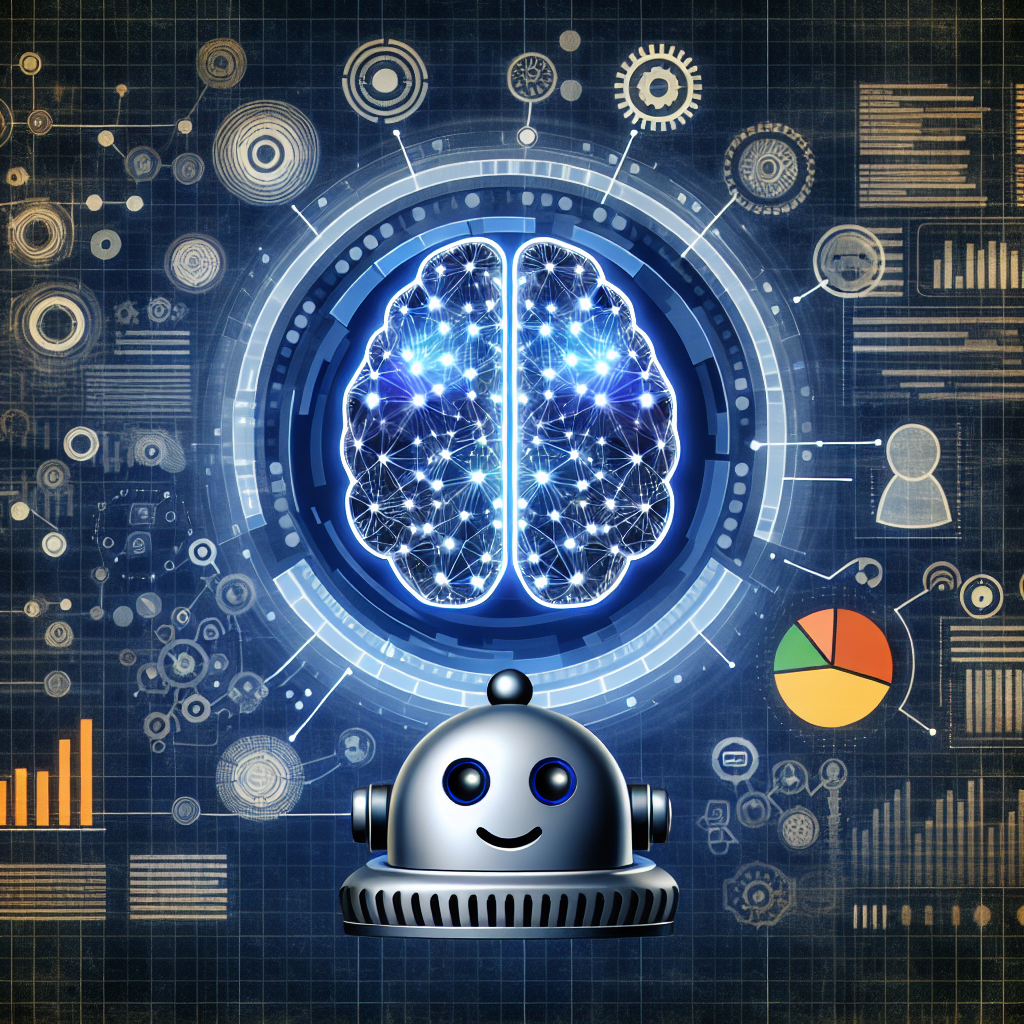Artificial Intelligence (AI) has revolutionized the way businesses operate, and one of the most significant applications of AI in business is through the use of chatbots. Chatbots are virtual assistants that can interact with users in natural language, providing information, answering questions, and even completing tasks. With the integration of AI-driven Business Intelligence (BI), chatbots have become even more powerful tools for businesses to engage with customers, improve efficiency, and drive growth.
AI-driven Business Intelligence for chatbots involves the use of AI algorithms and data analytics to enhance the capabilities of chatbots. By analyzing and interpreting data, chatbots can offer more personalized and efficient responses to users, leading to improved customer satisfaction and increased productivity. In this article, we will explore the benefits of AI-driven BI for chatbots and how businesses can leverage this technology to gain a competitive edge.
Benefits of AI-driven BI for Chatbots
1. Personalized Customer Interactions: With AI-driven BI, chatbots can analyze customer data in real-time to provide personalized recommendations and responses. By understanding each customer’s preferences and behavior, chatbots can deliver more relevant and engaging interactions, leading to higher customer satisfaction and loyalty.
2. Improved Efficiency: AI-driven BI enables chatbots to automate processes and tasks more effectively. By analyzing data and identifying patterns, chatbots can streamline workflows, reduce manual intervention, and handle a higher volume of inquiries with greater accuracy and speed.
3. Predictive Analytics: AI-driven BI allows chatbots to predict customer needs and behaviors based on historical data. By using predictive analytics, chatbots can anticipate customer preferences, identify potential issues before they arise, and proactively offer solutions, leading to a more proactive and customer-centric approach.
4. Real-time Insights: AI-driven BI enables chatbots to provide real-time insights and recommendations to users. By analyzing data in real-time, chatbots can offer up-to-date information, alerts, and suggestions, helping users make informed decisions quickly and efficiently.
5. Enhanced Customer Engagement: AI-driven BI enables chatbots to engage with customers in a more natural and conversational manner. By using AI algorithms to understand and respond to user intent, chatbots can create a more interactive and personalized experience, leading to higher engagement and satisfaction.
How Businesses Can Leverage AI-driven BI for Chatbots
1. Data Integration: To leverage AI-driven BI for chatbots effectively, businesses need to integrate their data sources and systems. By consolidating data from various sources, such as CRM systems, social media platforms, and website analytics, businesses can provide chatbots with a comprehensive view of customer information and behavior, enabling more personalized and relevant interactions.
2. AI Algorithms: Businesses need to implement AI algorithms, such as machine learning and natural language processing, to enable chatbots to analyze and interpret data effectively. By training chatbots with AI algorithms, businesses can enhance their capabilities to understand user intent, predict customer behavior, and deliver personalized responses.
3. Real-time Analytics: Businesses should invest in real-time analytics tools to enable chatbots to analyze data and provide insights in real-time. By using real-time analytics, chatbots can offer up-to-date information, alerts, and recommendations, helping businesses make informed decisions quickly and efficiently.
4. Continuous Improvement: Businesses should continuously monitor and analyze chatbot performance to identify areas for improvement. By collecting feedback from users, analyzing chatbot interactions, and measuring key performance indicators, businesses can optimize chatbot capabilities, enhance customer satisfaction, and drive business growth.
5. Security and Compliance: Businesses need to ensure that AI-driven BI for chatbots complies with data security and privacy regulations. By implementing secure data storage and encryption protocols, businesses can protect customer data and ensure compliance with regulations such as GDPR and CCPA.
FAQs
Q: How can AI-driven BI enhance customer satisfaction through chatbots?
A: AI-driven BI enables chatbots to analyze customer data, predict behavior, and provide personalized recommendations, leading to more engaging and satisfying interactions for customers.
Q: What are the key challenges businesses may face when implementing AI-driven BI for chatbots?
A: Key challenges include data integration, AI algorithm implementation, real-time analytics, continuous improvement, and security and compliance.
Q: How can businesses measure the effectiveness of AI-driven BI for chatbots?
A: Businesses can measure effectiveness through key performance indicators such as customer satisfaction, response time, task completion rate, and conversion rates.
Q: What are the potential risks of using AI-driven BI for chatbots?
A: Potential risks include data privacy and security concerns, algorithm bias, and over-dependence on AI technology.
In conclusion, AI-driven BI for chatbots is a powerful tool that can help businesses enhance customer interactions, improve efficiency, and drive growth. By leveraging AI algorithms, real-time analytics, and continuous improvement, businesses can create more personalized, engaging, and efficient chatbot experiences for their customers. With the right strategy and implementation, AI-driven BI for chatbots can give businesses a competitive edge in today’s digital economy.

